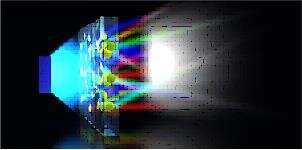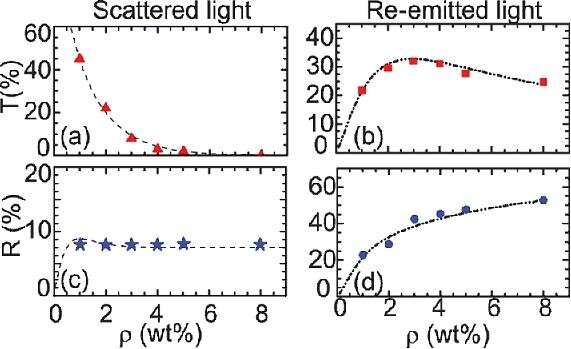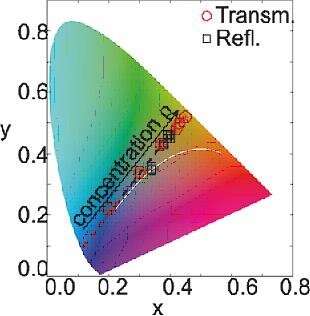Quickly designing a white LED

The advent of the white light emitting diode (LED), which consists of a blue LED with a phosphor layer, greatly reduces the energy consumption for lighting. Despite the fast-growing market, white LEDs are still being designed with slow numerical trial-and-error methods. A team of scientists from the University of Twente, Technical University of Eindhoven, and leading industry Signify (formerly Philips Lighting) have introduced a radically new design principle that is based on an analytical model instead of a numerical approach. The model predicts a white LED's color point for any combination of design parameters and allows for a much faster design, by up to a 1 million times, resulting in reduced design and production costs. The results are being published in ACS Photonics .
The main characteristics of a white light source are the color point and efficiency. The color point is defined by the emitted spectrum and it is described by two parameters that span the so-called color space. Optical designers currently use numerical simulations, often based on Monte-Carlo ray tracing techniques to extract the color point, given the design parameters of the white light source. To aim at a specific color point, optical designers have to use these simulations for each chosen set of design parameters. Unfortunately, simulation methods are very slow and consequently only a small part of the design parameter space can be explored. Hence, the design of a white LED relies on the experience of the optical designer rather than on a systematic exploration of the full design parameter space.
White LEDs have numerous advantages over conventional lighting sources such as incandescent lamps or discharge lamps. White LEDs are among the most energy-efficient sources, they are mechanically robust and thermally stable, they possess good temporal stability and they have a long lifetime. A typical white LED consists of a blue semiconductor LED and a phosphor layer that consists of a matrix of phosphor microparticles (see Figure 1).

Part of the blue light is transmitted through the phosphor layer, and part is absorbed and re-emitted in the red and green part of the spectrum to yield the desired white light. The relative amounts of scattered and re-emitted light (Figure 2) define the color point of a white LED. To adjust the color point, several design parameters are available, such as the phosphor particle density r (see Figure 3), the phosphor layer thickness L, the kind of phosphor, the type of blue LED, and additional optical elements.
Systematic design of the color point of a white LED requires algorithms that are much faster than ray tracing techniques. Leading author IJzerman from the company Signify says, "To date there is no good model to describe scattering in the illumination industry. All our models depend on advanced curve fitting whereby one or more parameters are determined by matching measurements with simulations. To improve this time-consuming and costly approach, an a priori model based on physical measurable parameters would be of great value and a major step forward." This is what the researchers have developed.

The Dutch team introduces an extremely fast and analytic computational tool based on the so-called P3 approximation to the radiative transfer equation. Lead author Vos says, "We are able to predict the color point of a white LED starting from the chosen design parameters. Conversely, we can get the design parameters of a white LED starting from a targeted color point."

IJzerman says, "In this new situation, the inverse problem does not require an iteration procedure for each new design cycle. Given the speed of our tool, we can generate a look-up table for the whole parameter space available to engineers. Thereby, we obtain tremendous speed and efficiency benefits."
Lagendijk says, "I am excited that white LEDs will further contribute to a fast globalization of lighting, and thus to worldwide literacy and democratization. This is relevant to regions where a few solar cells are readily available, and where extensive electricity grid is too expensive or tedious."
More information: Maryna L. Meretska et al. Systematic Design of the Color Point of a White LED, ACS Photonics (2019). DOI: 10.1021/acsphotonics.9b00173
Journal information: ACS Photonics
Provided by University of Twente




















